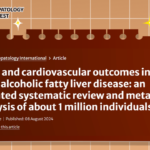
Editor's Note: In 2023, the World Health Organization (WHO) recommended that countries with low HIV prevalence adopt a triple testing approach to confirm HIV-positive diagnoses. Specifically, WHO advises countries with an HIV prevalence below 5% to use three consecutive tests to ensure a 99% diagnostic accuracy. The proportion of positive HIV tests in a population can impact diagnostic accuracy, and when the HIV positivity rate is below 5%, at least three consecutive tests are required to guarantee a 99% accuracy rate in diagnosis.In response, Malawi revised its HIV testing guidelines, becoming the first country globally to adopt and transition to the new triple HIV testing algorithm. This move aims to reduce the risk of false-positive diagnoses due to declining positivity rates. The transition included updates to the national HIV Testing Services (HTS) procedures, introducing the “3-test HIV testing algorithm,” which involves three consecutive rapid diagnostic tests (Determine HIV1/2, Uni-Gold HIV1/2, and SD Bioline HIV1/2). Additionally, advanced monitoring and evaluation (M&E) tools were implemented to obtain critical HIV testing outcomes.
Coordinated by the Malawi Ministry of Health, this nationwide phased initiative began in November 2022. By January 23, 2024, the program had been successfully rolled out in 545 facilities across all 28 districts, covering 78% of testing sites. Malawi’s national health quality supervision and daily automated data quality assessment using ScanForm technology have played a crucial role in ensuring data accuracy, algorithm consistency, and driving continuous quality improvement across testing sites. At the recent 25th International AIDS Conference (AIDS2024), Dr. Tiwonge Chimpandule from the Ministry of Health, Malawi reported on the latest progress of this initiative.
Researchers collected 3,082,406 HIV testing records from November 1, 2022, to January 23, 2024. Among the total tested population, the consistency rate of the “3-test HIV testing algorithm” was 99.96% (2,605,324 / 2,606,280). Of these, 371 individuals (239 females and 132 males) who tested positive on the first two tests received indeterminate results on the third test. Under the previous two-test algorithm, these individuals would likely have been misdiagnosed as HIV-positive and started on antiretroviral therapy immediately. Additionally, 448 individuals (281 females and 167 males) were diagnosed as HIV-negative, whereas under the previous two-test algorithm, they would have required retesting after two weeks.
The study’s results emphasize the importance of adopting the WHO-recommended triple testing approach in reducing misdiagnoses. Malawi’s experience demonstrates that with effective provider training and robust M&E tools like ScanForm, the accurate implementation of this algorithm can be rapidly achieved. Full transition is expected to be completed by June 2024, with ongoing on-site support to ensure sustained success.
The clinical significance of this study is profound, providing a practical example for other countries on how to effectively implement HIV testing. It also underscores the importance of using advanced technology for data monitoring and evaluation. Through these measures, Malawi has not only improved the accuracy of HIV testing but also reduced unnecessary treatments and potential health risks associated with misdiagnoses. This successful experience is expected to be promoted globally to further optimize HIV testing strategies and improve patient care quality.
Expert Interview
01
IIDF: The study found that 371 individuals received inconclusive results under the 3-test algorithm, which would have likely led to misdiagnosis as HIV positive under the previous 2-test algorithm. How does this finding specifically impact HIV diagnostic strategy?
Dr. Chimpandule: Thank you very much for the invitation. I am from Malawi, located in Southern Africa, and we are one of the first countries to adopt the WHO’s newly introduced triple HIV testing algorithm. From our implementation, which began in November 2022, we transitioned from the two-test to the triple-test algorithm. As of July, we have been implementing it for 21 months. During this 21-month period, we tested approximately four million people and found that 556 individuals were spared from misdiagnosis. This means that under the previous two-test algorithm, these individuals, who would have tested positive on the first test and reactive on the second, would have started antiretroviral therapy on the same day. With the addition of the third test, the majority of these individuals underwent further testing and received negative results. Based on this study, we have come to understand the real and positive impact that implementing the WHO’s triple testing algorithm can have on individuals’ lives. We are very pleased to see that 556 people avoided an incorrect positive diagnosis.
02
IIDF: How did ScanForm technology play a role in data collection and quality assessment, and what impact did its introduction have on the accuracy of the study results?
Dr Wu: Thank you very much. My name is William Wu, and I am Chief Executive of QED. We are making the ScanForm technology that was used in this deployment. To summarize, all the data for this national scale deployment, across almost 2500 testing points in Malawi, was deployed using ScanForm. This is regular paper, regular pen. You fill out the forms and take a picture with an Android phone. We use artificial intelligence to automatically extract and automatically analyze all the data in that register at the national scale. It has impacted the deployment because there are many facilities that do not have stable electricity. Some of them struggle with roofs, and water, and other basic things, so it can be very difficult to deploy computers at every testing point. This makes it practical to implement the three-test algorithm on a national scale by simply using pen and paper, which everyone has, and only one or two phones per clinic. Another thing is the cost is very inexpensive. The cost of printing these registers is cheap, and we can also make sure that people follow this three-test algorithm accurately. Anytime they deviate from the protocol, when we take a picture, the AI knows they have made a mistake and sends them an error message saying please correct it. Thanks to this automatic, continuous quality improvement, we see this 99.96% correct implementation of the algorithm. It is a very practical and inexpensive way to deploy this algorithm at scale that other countries can also use.
03
IIDF: Moving forward, how do you plan to further improve HIV testing algorithms or monitoring and evaluation tools to enhance the accuracy and efficiency of HIV diagnosis?
Dr Chimpandule: I think there are two things. Number one is, as I said, we are one of the first countries to have adopted the three-test algorithm in sub-Saharan Africa. We looked at the evidence that was issued by the WHO, and then of course piloted within our setting. Based on the adoption of the three-test algorithm, I can say we managed to save many individuals from starting ART. Moving forward, I think we will be on the look out to see what evidence is there on issues of HIV diagnosis, and see if there are things that we can adopt. Of course, before adopting, you need to pilot, and then see if the program can be implemented within our context. Then you asked about monitoring and evaluation tools. As we have said, ScanForm has really helped us in ensuring we have digitized records, which is very important for individualized data, but also in trying to make sure we have a quality transition to the three-test algorithm. So in this case, our experience suggests we can expand ScanForm to other programs. We are thinking about expanding ScanForm to a sexually transmitted infections program, because right now we are paper-based and not digitized but we have lots of data that we want to be ScanFormed. There are decision points we are failing to make because we don’t have the registries that ScanForm can provide. Moving forward, even for laboratory forms, some are collected in facilities in paper registers, but we could use ScanForm to have real-time individualized data from the various lab forms. That is the plan that the Ministry is trying to look into based on the lessons we have learned so far.
Dr Wu: I wanted to say that this was actually about 15 years of work in actual development. This is the project we are most proud of today. It has the most impact. We really want to thank the Malawi Department of HIV and AIDS. They really believed in this technology. They saw the vision. They allowed the technology to explore on a national scale and really make use of its potential. I just want to express my thanks to our sponsors, Global Fund, and the Malawi Department of HIV for making this such a wonderful experience.


